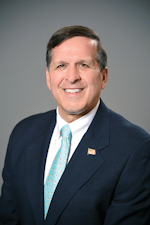Author's note: Levin Group has reviewed and prioritized hundreds of strategies to increase practice production. Each month, we highlight a powerful idea ranked in order of priority.
As I mentioned last month, dentistry is facing a staffing crisis and we will dedicate three installments of this series to addressing the impact of staffing on practice production.
No one would argue that higher staff longevity does not contribute to increased practice production. In Levin Group’s 30-year ongoing study of top 10% producing practices, we have measured and observed that these practices typically have higher staff longevity, with an average tenure of more than 10 years. This would support that higher staff longevity contributes directly to higher production.
In an era of staffing challenges, it is important to keep current staff members in mind. Too many practices are hyper-focused on hiring new team members, as a shortage of staff can lead to frustration and fatigue. However, practices must remember that a shortage of staff members or a higher level of busyness also causes fatigue and burnout for the current staff, which can lead to additional loss of team members or lower productivity.
More Practice Production, Prioritized:
- Practice production, prioritized: The dental staffing crisis
- Practice production, prioritized: Completing incomplete treatment
- Practice success: Moving to the next level
I love the expression, “If you take care of your team, they will take care of you.” I’ve found this to be true of many dental team members who’ve verbalized their commitment to the success of their practice and excellent care for patients. The good news is that there is a set of proven methods that will help you to take care of your current team. Here are three strategies to consider to retain, manage, motivate, and grow your current team.
Create a purpose for coming to work.
We find that many people no longer want to think of work as work. They want to think of it as an extension of their whole life where they can experience satisfaction, camaraderie, and the opportunity to contribute and grow. The best way to create a purpose for the entire team is to establish a mission statement that becomes part of the practice culture. A mission statement defines the long-term purpose of the practice, and everyone can rally around it. However, if it is stated and then forgotten, it will do little to help create a true purpose in the practice. We find that practices that focus on their mission statement, use it to make decisions, and verbalize it often are able to create a deep level of purpose.
Create a fun working environment.
At live seminars and webinars, I talk about treating the team as customers. I literally mean that the team should be thought of from a customer service standpoint and every practice should create a team-based customer service plan. This can include fun surprises such as bringing in lunch, giving out dinner and movie gift certificates, participating in community activities, and hosting food truck evenings. Furthermore, we recommend that at every three months the practice have an outside-the-office activity that gives the team a chance to relax and interact. This almost always results in improved attitudes.
Help each team member define a career path.
Not everyone can be promoted, due to the varying limitations and sizes of different dental practices. However, they can be made aware of the training they will receive, how they can contribute to patients and the practice in additional ways, future compensation paths, and other opportunities, if they exist. A person who sees some level of opportunity in their future is a person who works toward that future and enjoys the environment that is supporting them.
We are facing a new era of dental practice staffing and staff management. However, a motivated staff that is self-disciplined is a staff that doesn’t really have to be managed and will contribute to higher levels of practice production.
Editor's note: This article appeared in the February 2022 print edition of Dental Economics.







